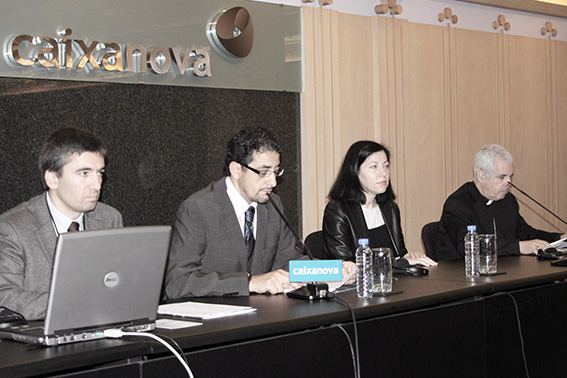Apertura
DOI:
https://doi.org/10.17979/aarc.2009.2.1.5034Palabras clave:
Arquitectura religiosa, concepto, identidad, Ourense, memoriaResumen
La identidad del edificio de culto cristiano es uno de los problemas mas delicados que ha de afrontar la arquitectura religiosa en el arranque de este nuevo milenio. Pienso que la arquitectura religiosa contemporánea es hija de dos revoluciones: de la revolución arquitectónica, que se puede visualizar en el Movimiento Moderno; y de la revolución litúrgica, que también se puede ver muy claramente en el Movimiento Litúrgico. Se tata de dos peticiones de principio, de dos vueltas a los orígenes, de dos nuevas formulaciones conceptuales de un tema milenario como es la arquitectura religiosa, y que en el caso de la arquitectura cristiana, de la arquitectura católica, han dejado a los edificios de culto en una inédita situación de precariedad identitaria. Algo que no había sucedido en ningún momento de la historia. Podríamos decir que el frío concepto —lo que idealmente debe ser una iglesia— ha ahogado la vida. Pero también hay que decir que esto ha ocurrido sobre todo en Occidente.
Hoy el mundo ha cambiado. Vivimos en un mundo mestizo, un mundo lleno de migraciones, de conexiones, de oportunidades, de múltiples intercambios, de sistemas de información compartidos. La vida fluye rápido, muy rápido. Existen cruces de creencias, diálogo entre esas creencias, conflictos, y en muchas partes del mundo la religión aparece como un factor de cohesión social y de identidad comunitaria. Por eso nos podríamos preguntar: en este mundo global, ¿qué respuestas tiene la arquitectura como disciplina para estos fenómenos? ¿Qué respuestas podemos dar los arquitectos? ¿Qué experiencias —en este sentido— existen?
Descargas

Descargas
Publicado
Número
Sección
Licencia

Esta obra está bajo una licencia internacional Creative Commons Atribución-NoComercial-CompartirIgual 4.0.















